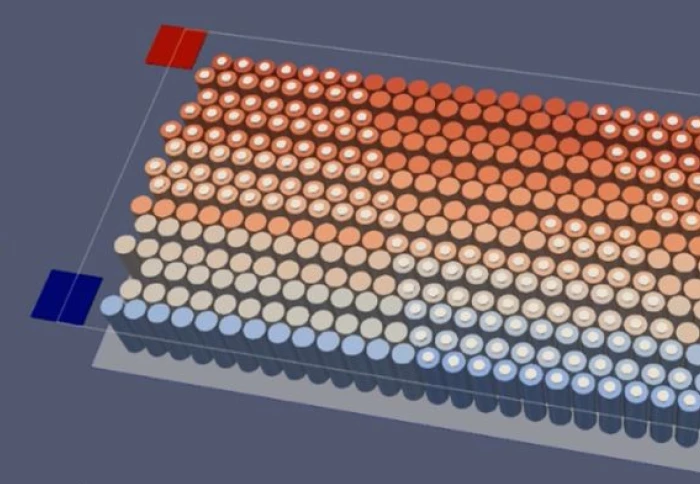Multi-scale modelling for battery performance, safety and sustainability


The Institute for Molecular Science and Engineering and the Faraday Institution have published a briefing paper on computer modelling for batteries.
The briefing paper explores The Value of Modelling for Battery Development and Use. Computer simulation can predict how a future battery will run, which saves time in battery research and reduces the number of expensive prototypes that need to be built. Models can be built at multiple scales, from the atomic to the grid. This captures the complexity of the battery system, from material to cell to pack to energy system. Modelling is often the only practical tool to predict battery performance or failure. This helps industry make rapid advancements in battery performance, ensuring safety, efficiency and profitability.
The Institute for Molecular Science and Engineering worked with the Faraday Institution to write the paper.
Green energy transition
Energy storage is essential to the green energy transition, and batteries are a key element of this.
Lead author Dr Jacqueline Edge said,
“We wanted to highlight the importance of implementing sustainability at all stages of the battery lifecycle, particularly before we scale up their manufacture. It’s important to choose the right materials and chemistries, and to use them as effectively as possible. At the end of their useful lives, it is critical to recycle them, so that we extract all of the materials and therefore can reduce mining activities.
Whole systems models, which look at the costs and benefits of introducing batteries to transport and energy systems, can help us to see the trade-offs and work out the most effective way to make, use and recycle batteries sustainably. Dr Jacqueline Edge MSM Research & Business Lead
"In the paper on modelling, I felt that there is a lot of misunderstanding about how modelling works and how effective it can be, so I proposed this paper as an introduction to all the different types of battery modelling and the benefits these can bring us. For example, whole systems models, which look at the costs and benefits of introducing batteries to transport and energy systems, can help us to see the trade-offs and work out the most effective way to make, use and recycle batteries sustainably. I hope that both papers help to shed light on these fairly complex topics and make them a bit more accessible to policymakers.”
Join the authors at the launch
The policy paper was released in December 2022. Join the authors online for the launch of the paper and discussion of its implications on 6 January 2023, 16.00-17.00.
IMSE’s track record
IMSE produces briefing papers to demonstrate the power of the molecular engineering approach to solving major research challenges. One of IMSE’s research challenges is developing low cost, green energy technologies. In March 2022, IMSE published a paper on Safe and Sustainable Lithium-ion Batteries, with the Energy Futures Lab. The paper examined how to reduce the impact of Li-ion batteries on the environment and how to ensure they do not endanger workers or users.
Article text (excluding photos or graphics) © Imperial College London.
Photos and graphics subject to third party copyright used with permission or © Imperial College London.